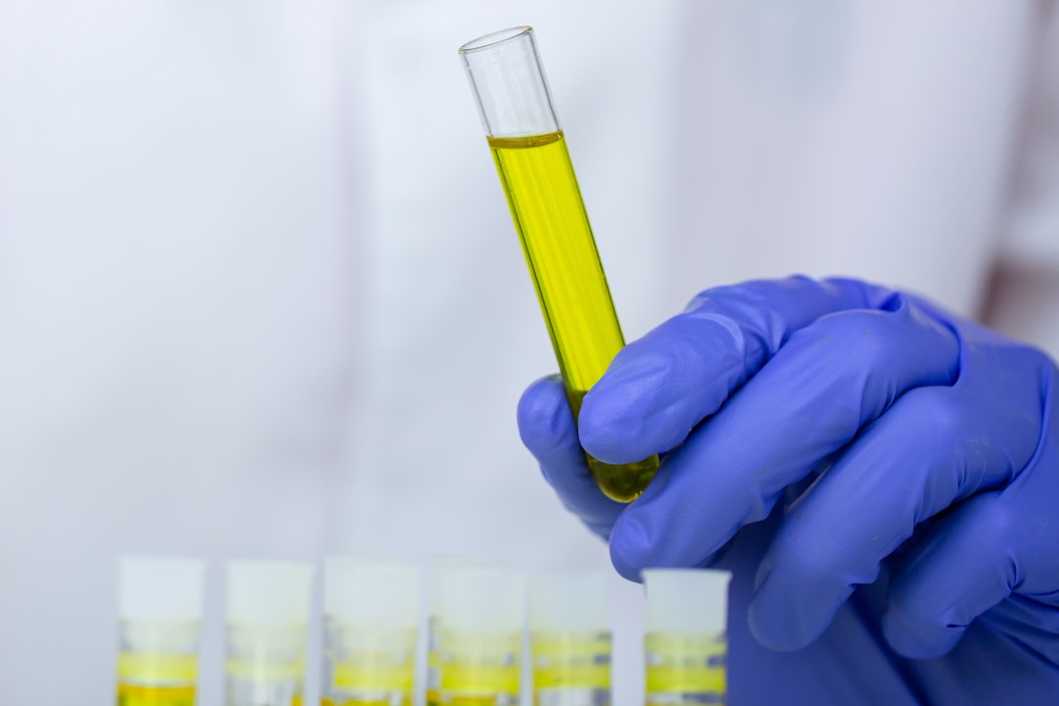GC-FID analysis
Gas chromatography-flame ionization detection (GC-FID) is an analytical technique that is used to separate and analyze mixtures consisting of volatile components. GC-FID is particularly useful in detecting and quantifying organic compounds, such as fatty acids in food and resin acids in water.

Some of our GC-FID services
Overall migration testing – simulant A, B, D2 (all foodstuff)
Overall migration testing – simulant D2 (olive oil)
Specific migration testing – ethylene glycol and diethylene glycol
Specific migration testing – 1-octene
Specific migration testing – 1,1,1-trimethylolpropane
Volatile organic compounds (VOC) in water
Purity assay of solvent samples (GC-FID and Karl Fischer)
Single-use plastic food contact materials (FCM) – EU compliance testing package
Prices excluding VAT.
What is GC-FID analysis used for?
GC-FID is primarily used in industry and research to characterize mixtures of organic compounds. In pharmaceutical testing, the method can be used to identify residual contaminants, in polymer analysis to quantify residual monomers, and in the petrochemical industry to identify and quantify different hydrocarbon components in oil and other fuels.
GC-FID can also be used in food testing to determine the fatty acid profile of food. In environmental research, the technique can be employed to identify resin acids in water and contaminants in air samples.
How does GC-FID work?
Initially, the sample is passed through a gas chromatography column. This evaporates volatile compounds and causes the resultant gaseous mixture to be separated into individual components. Once the sample reaches the end of the column, it enters the flame-ionization chamber, where it is mixed with hydrogen and a suitable oxidant. This mixture is then burned with a hydrogen flame, causing any chemical components to become ionized and giving them a positive charge.
Above the flame is a negatively charged collector plate. As the positive ions emerge, they are accelerated towards the collector plate where, upon making contact, they induce an electric current. This current is measured, with the amount of current being related to the number of carbon atoms burned. By logging the data, it is possible to determine which components were present in the original sample, and in what quantities.
Sample requirements and preparation
GC-FID samples are generally prepared by dissolving or mixing the material in a low-boiling-point solvent, such as methanol. This solution is then injected into the chromatograph, which will cause it to vaporize rapidly into the gas phase. Note that solid organic samples can be analyzed this way, provided that they become volatile once dissolved.
GC-FID vs. GC-MS – What are the differences?
Gas chromatography–mass spectrometry (GC-MS) starts the same way as GC-FID, by separating the sample in the gas chromatograph. However, instead of a flame ionization detector, the sample is then passed through a mass spectrometer, which further separates and measures the ions based on their mass-to-charge ratio.
Typically, GC-MS is most useful when it comes to qualitative analysis, such as identifying unknown compounds and molecules based on their size. GC-FID, on the other hand, provides higher accuracy in quantifying many components.
To achieve a comprehensive set of results, GC-MS and GC-FID are often used in tandem with each other. A good example of this is NIAS testing of food contact materials, where the combined GC-MS/FID method can be used to first identify previously unknown components (with the MS detector) and then quantify them (with FID).
Need analysis services?
Measurlabs offers high-quality GC-FID measurements for a wide range of industries and research fields. Information on pricing and turnaround times is available for many analyses in our online catalog. Check out, for example, this purity assay of organic solvents, which combines GC-FID with Karl Fischer titration to determine solvent purity.
For a customized quote, including possible volume discounts for large batches or recurring orders, contact us through the form below. We will respond within one business day.
Suitable sample matrices
- Natural oils
- Organic mixtures
- Air samples
- Volatile hydrocarbon mixtures
Ideal uses of GC-FID
- Determining the composition of hydrocarbon mixtures
- Monitoring air quality
- Fatty acid analysis of food
- Resin acid analysis of environmental samples
Ask for an offer
Fill in the form, and we'll reply in one business day.
Have questions or need help? Email us at info@measurlabs.com or call our sales team.
Frequently asked questions
Common applications of GC-FID include solvent purity analysis (together with Karl Fischer titration and ICP-MS) and fatty acid profile determination of food products. Different environmental samples can also be screened for contaminants, including volatile organic compounds.
Because of the gas chromatography element, GC-FID is only suitable for samples that are either volatile or can be prepared in a way that makes vaporization possible. The method is very sensitive when it comes to analyzing most organic hydrocarbons, but it cannot detect some other compounds, such as carbon monoxide or carbon disulfide.
Depending on the analyte, other GC detectors, such as the electron capture detector (ECD), may offer a lower detection limit.
Measurlabs offers a variety of laboratory analyses for product developers and quality managers. We perform some of the analyses in our own lab, but mostly we outsource them to carefully selected partner laboratories. This way we can send each sample to the lab that is best suited for the purpose, and offer high-quality analyses with more than a thousand different methods to our clients.
When you contact us through our contact form or by email, one of our specialists will take ownership of your case and answer your query. You get an offer with all the necessary details about the analysis, and can send your samples to the indicated address. We will then take care of sending your samples to the correct laboratories and write a clear report on the results for you.
Samples are usually delivered to our laboratory via courier. Contact us for further details before sending samples.